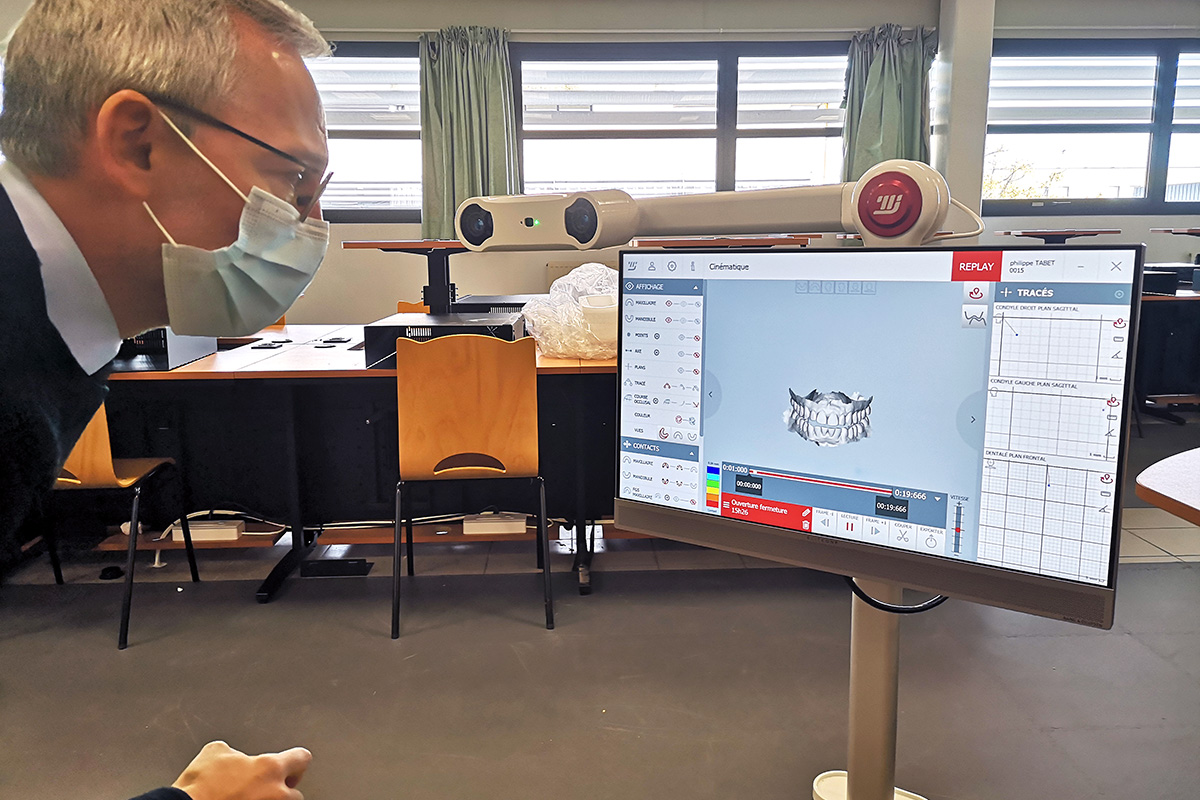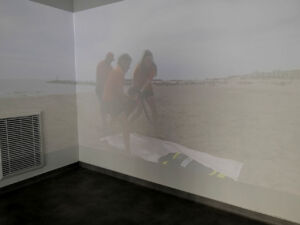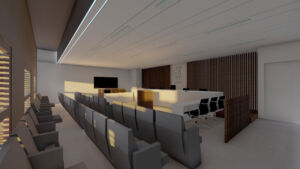Educational innovations: four rooms, four atmospheres
In 2020, 16 projects were selected as part of the Muse #Take Off 4 program. A call for projects with a budget of over 1 million euros to support innovative educational facilities. Eighteen months on, where do these projects stand? Let's take a look at the School of Chemistry, and the Faculties of Odontology, Medicine and Law, where small revolutions are in the making.

You're on the beach in Agde, France, where rescue workers have just saved a young man from drowning. As they take him back to the beach, you are about to administer first aid: you are a young doctor. You've been trained for this moment. And yet, the screams of your family and friends, the stares of the vacationers crowding around you, the sound of an approaching helicopter... You weren't prepared for all this stress at university! Here's a phrase that young doctors will soon no longer be able to utter.
Imaginason: collective immersion
 The scenario we have just described is precisely one that students will now be able to prepare for thanks to Imaginason, the Faculty of Medicine's new teaching equipment for group immersion learning. In concrete terms: a video sequence, such as drowning on the beach at Agde, is projected onto the walls of a room in which the students will have to provide the appropriate care to a robot-patient. Immersion through sound and image immerses future doctors in an environment very close to the real-life situations in which they will one day have to intervene.
The scenario we have just described is precisely one that students will now be able to prepare for thanks to Imaginason, the Faculty of Medicine's new teaching equipment for group immersion learning. In concrete terms: a video sequence, such as drowning on the beach at Agde, is projected onto the walls of a room in which the students will have to provide the appropriate care to a robot-patient. Immersion through sound and image immerses future doctors in an environment very close to the real-life situations in which they will one day have to intervene.
" Creating a stressful environment around the students, putting them into action in a contextualized scenario capable of generating emotion, not only helps them to prepare better for the real conditions in which they will be practicing their profession, but also helps them to anchor their reflexes more deeply," explains Blaise Debien, an emergency physician and head of the teaching center for emergency care at Montpellier University Hospital.
Numodonto: the hub
Let's move on to the Faculty of Dentistry, which began its digital transition 10 years ago, with the integration of haptic simulation and 3D glasses for anatomy teaching as examples. " Digital resources now enable us to create fully personalized teaching sequences and working models , allowing us to reproduce any clinical situation. These models are produced on-site using 3D printing by François Bertrand, a dental technician ", explains Jean-Cédric Durand, Vice-Dean of the Faculty.
Computer-aided design and manufacturing (CAD/CAM) permeates the walls of this university and hospital complex with, among other things, the recruitment of Professor Michel Fages and the creation of the1st medical activity unit devoted to this technique in 2015. The Faculty now goes one step further by offering a hub center that is unique in Europe. Equipped with a range of scanners and business software, this hub will enable students to work on fully digital models in areas as diverse as dental morphology, prosthetics, aesthetics, dentofacial orthopedics and implantology....
" With this equipment, sessions will be faster and more effective than with current physical supports. The exercises will be closer to the reality of the field," explains Michel Fages. Digital technology also reduces the cost of equipment for students, cutting the cost of the dental kit. " Named after François Duret, the inventor of CAD/CAM dentistry, the hub center will welcome its first students early next year. " It's the culmination of a commitment and a constant desire to be as attractive as possible to the younger generation of teachers and to unite them," concludes the vice-dean as he closes the door.
Justitia: the courtroom
 Third environment: the mock courtroom at the Faculty of Law. Designed with the help of an architect, this educational facility replicates the configuration of a real courtroom as found in a real courtroom. "This active teaching tool is a national and even European first for a university. This room will enable students to organize their pleading or eloquence competitions in real-life situations. "explains the Dean of the Faculty, Guylain Clamour.
Third environment: the mock courtroom at the Faculty of Law. Designed with the help of an architect, this educational facility replicates the configuration of a real courtroom as found in a real courtroom. "This active teaching tool is a national and even European first for a university. This room will enable students to organize their pleading or eloquence competitions in real-life situations. "explains the Dean of the Faculty, Guylain Clamour.
Equipped with a double video-conferencing system, this equipment will also enable Montpellier students to practice with students from other universities, " a collaboration is already in place with Paris 2 " continues the Dean. A connected camera will enable live rebroadcasting of the sessions on the University's Youtube channel. The modularity of the room also means that the courtroom can be used in a variety of ways, including as a " committee room" for political science students, as is the case at the French National Assembly. The official inauguration is scheduled for January, but the room is already in great demand," concludes Guylain Clamour.
Créactive: design thinking
Finally, we head for the Ecole de Chimie, where the Creactive project offers students a place dedicated to learning how to manage a project based on stimulating creativity. This is the second stage in the EPIICs projects, which for the past two years have been putting students in the position of developing an innovation in teams, with a view to bringing it to market. To help them in this process, Creactive is a creative room based on the principle of design thinking. This modular space is equipped with all the equipment needed to stimulate intra-team exchanges: furniture, tablets, video-projection and video-conferencing devices, cloud software...
To encourage the design of innovative functional parts, ENSCM has also equipped itself, thanks to #Take Off 4, with a system of 3D printers capable of combining different types of materials: molecular, ceramic particles, resins, photosensitive polymers." Project-based teaching is an important part of ENSCM's pedagogy. The EPIICs projects, by their scope and the achievements they will bring, will be an important vector of this communication with our future students" concludes David Virieux, the project leader.